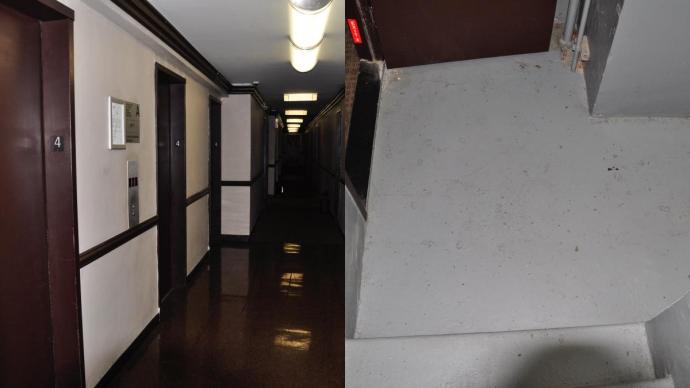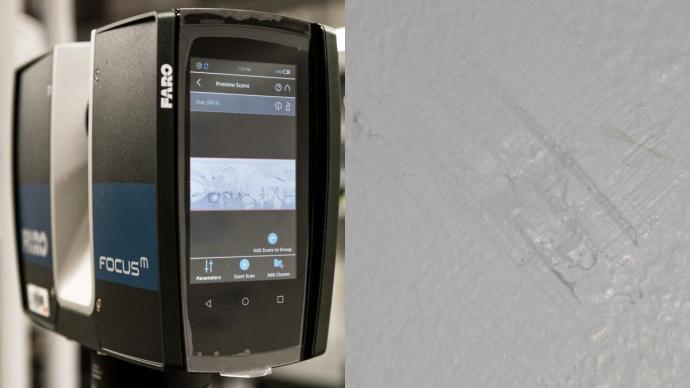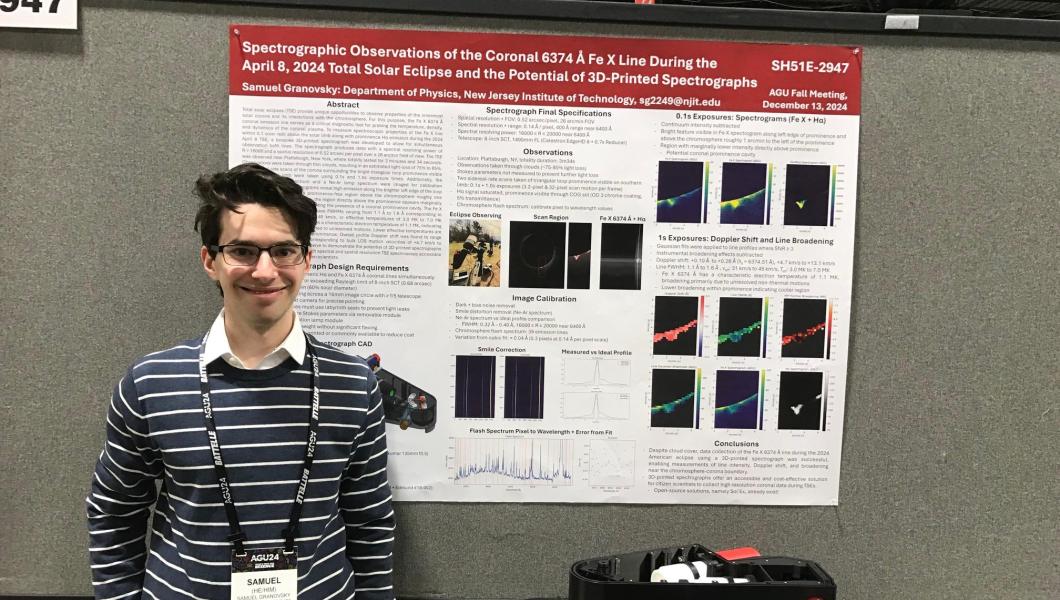How an NJIT Forensic Team Helped Exonerate Two Men Wrongfully Imprisoned for Murder

A New Jersey Institute of Technology forensic team’s crime scene reconstruction of a 1994 shooting in Queens, N.Y. has helped clear the names of two wrongfully convicted men who spent a combined 37 years in prison for murder.
A long-awaited moment of vindication came for Armond McCloud (incarcerated for 29 years) and co-defendant, Reginald Cameron (incarcerated for eight years), when their convictions were recently vacated by a state Supreme Court judge in Queens after a joint motion was filed by the New Jersey Innocence Project at Rutgers University, the New York City Legal Aid Society and Queens District Attorney Melinda Katz.
Since their convictions, both men have maintained they were coerced into falsely confessing to the murder of 22-year-old Kei Sunada on the night of Aug. 4, 1994, after they were held for thirteen hours under interrogation without legal counsel.
The case received a lifeline after the New Jersey Innocence Project began assisting them three years ago.
By January 2022, the group, which is part of Rutgers Law School’s clinical program, contacted members of NJIT’s Forensic Science Program to revisit the scene of the crime and piece together the chain of events that unfolded on the night of the shooting nearly three decades ago.
“The Innocence Project sought our help conducting a crime scene reconstruction to see if the proffered statements [filed in the 1994 police investigation] were physically possible,” said Kevin Parmelee, NJIT forensic science professor of practice and former Somerset County (N.J.) detective who led the reconstruction.
“In the end, the physical evidence and reconstruction proved all the statements erroneous, and we provided the true shooting scenario.”
The body of evidence — including bullet trajectory analysis and 3D renderings of the scene — finally clarified the circumstances surrounding the shooting of Sunada, which occurred in a fourth-floor stairwell of his apartment building in the Corona neighborhood of Queens.
Coerced statements from then-suspects McCloud and Cameron, which were obtained by police including former N.Y.C. Detective Carlos Gonzalez, had placed the shooting near elevators in a separate fourth-floor hallway.
According to the Innocence Project, the case marks the third time that false confessions were elicited by former detective Gonzalez. Another is the “Central Park Five” rape case in 1989.
“In this case, a bad police investigation ended up telling on itself,” said the Innocence Project in a statement. “(Former) Detective Gonzalez’s mistaken idea about where this crime happened — he thought it happened in a hallway, when it actually happened in a separate stairwell — ended up in Mr. McCloud’s confession. It is crystal clear that Mr. McCloud’s so-called confession was nothing more than him being forced to repeat the police’s theories.”
Reconstructing a Nearly 30-Year-Old Crime Scene
In February, Parmelee, NJIT Forensic Science Director David Fisher and four students of Parmelee’s spring semester CSI course — Cassandra Auletta ’23, Mira Sapozhnikov ’24, Gabrielle Corbo ’24 and Aditya Chandel ’23 — traveled to the location of the shooting: the Lefrak City Apartment Complex on the Horace Harding Expressway.
The group spent hours documenting the building's hallways, stairwells and elevator lobbies using a 3D laser imaging device employed by crime scene investigators, called a Faro 3D scanner.
Eventually, the team’s work would be used to produce a 3D scaled model of the scene and recreation of the shooting back at NJIT’s forensics lab.
“The scope of the work we were doing didn't fully click until then,” said Sapozhnikov, a forensic science major and Albert Dorman Honors College student from Montville, N.J. “Walking through and documenting the scene, I remember thinking that we might resolve a case that occurred when I wasn't even born.”
Above: Crime scene locations documented by NJIT. The fourth-floor hallway where the shooting was reported in 1994 (left), and the true scene of the shooting in a nearby fourth-floor stairwell (right). Credit: NJIT
Upon arriving at the fourth floor’s stairwell, the team would document glaring evidence that remains to this day.
“There’s a ricochet mark from the bullet that is visible on the wall in the stairwell. After 30 years it’s still there … only some light spackling was put there to cover it,” said Corbo, a forensic science major from Old Bridge, N.J., who works at the N.J. State Toxicology Laboratory. “Given the statements from 1994, it was hard to understand.”
Above: Using FARO 3D laser scanning technology (left) to produce photorealistic 360-degree views of the scene, the team captured key evidence including a ricochet mark in the building’s stairwell (right).
At NJIT, the team began piecing together the evidence, syncing scans from their workup of the building’s fourth floor hallway and stairwell with photographs of the scene from 1994 to digitally render the true shooting location and bullet trajectory path.
Parmelee, who led the post-processing of the FARO image data at NJIT’s forensics lab, as well as a review of hundreds of pages from case files including the original autopsy report, witness accounts and CSI documents, began the long process of reconstructing the shooting.
After months of scrutinizing the materials and recreating the events of the incident, Parmelee had his report for the Queens district attorney.
“The bullet trajectory analysis placed Sunada inside the fourth-floor stairwell at the time of the shooting, standing near a door leading to the hallway,” Parmelee explained. “The shooter would be facing the victim in the stairwell, toward the stairs leading to the fifth floor.
Above: Digital recreation of the shooting demonstrating the true bullet trajectory path, as well as the victim’s and suspect’s location and spatial relationship to each other. Credit: NJIT
“After the shot was fired, it perforated the victim’s head and ricochet off the wall, and then again off another wall at the fifth-floor landing. The victim fell to his right side spanning the fourth-floor landing and the discharged casing was located near his head.”
Parmelee said that the review of witness statements offered an explanation as to the original investigation’s false narrative.
“In any crime scene reconstruction, statements and reports of suspects, witnesses and emergency personnel are reviewed against the physical evidence and location of a crime,” said Parmelee. “This is one such case that benefited from this analysis to confirm or refute information and highlight the true events.”
For now, the collaborative effort has helped yield a life-changing decision, particularly for McCloud, who was arrested when he was 20 years old and was released on parole in January 2023. He had filed numerous motions and petitions to overturn his conviction in 1996.
“It feels great to have my innocence finally recognized after 29 years,” McCloud said in a statement released by the New Jersey Innocence Project.



